
Archaeologists have long theorized that caves were extensively used by the ancient Maya as centers of ritual activity, seen as the home of gods and as portals to the Underworld. Xibalba (Shee-bal-ba) was the name the K’iche Maya gave to this underworld. The name Xibalba translates into ‘Place of Fright’, which hints at the terror, spirits and sacredness that caves infused into the Maya belief system. As such, the simple, crude and distorted faces and objects in Mayan cave art have long been viewed as part of the Xibalbá setting, in contrast to the exquisite lines and characters of the carved stelae monuments found at their ancient cities.

The small country of Belize has 100’s of limestone caves and sinkholes, most either unexplored or undiscovered, including some of the largest and longest in Central America. New subterranean features are found every year. For example, the Guardian Sinkhole in the Chiquibul forest was re-discovered late last year by the Karst Management Team of Friends for Conservation and Development (FCD), the NGO that manages the Chiquibul. Inside they found the largest known carved speleothem in Belize (described here ). Speleothems, commonly known as cave formations, are mineral deposits formed in a cave such as stalagmites and stalactites.
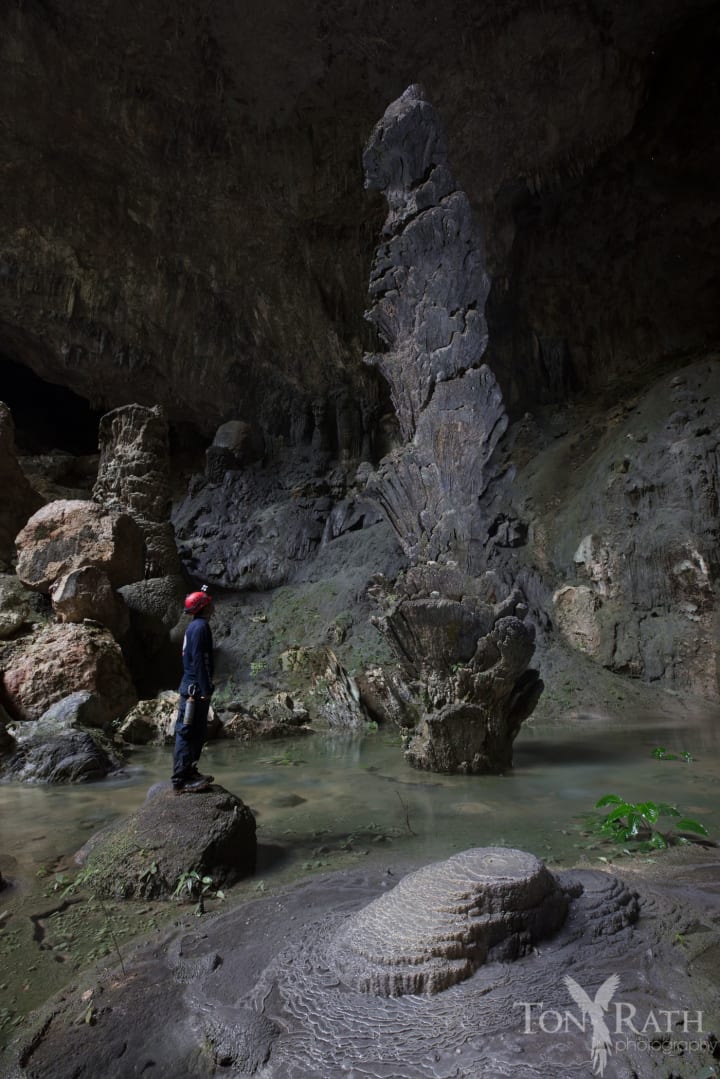
Following the publishing of the above article, a young archaeologist, Cameron Griffith having read the story, called me wanting to meet in person to discuss what he described as “something that will blow your mind”. What he told and subsequently revealed got me thinking about and seeing caves from a different perspective.
First, you will have to understand something about the limestone in caves — it is geologically alive. Imagine you have two candles, one standing upright on a table, the other held upside-down above the first. Now light the standing candle and let it burn for 10 minutes. Blow it out and light the one held above for ten minutes and let the wax drip down onto the top of the first candle.
After the burning, examine the candle standing on the table. Drips and flows and a build up of wax decorate the top and the sides. That basically is what happens to limestone, except each minute of candle burn time translates into 100 years for limestone. Limestone drips, flows, dissolves, crystalizes, breaks and changes shape over the millennia. So you will have to use a little bit of imagination when viewing the photos that follow.

Access to the caves is through private property, and the owners asked that I not publish some of the more striking examples of what Cameron calls Monumental Modified Speleothem Sculpture. While he has published scientific papers on his theories, many archaeologists working in Belize are skeptical of his claims - all parties agree that further study is needed.
You can judge for yourself from the following examples he showed me.
We entered a cave complex in the far western part of Belize, not far from the Guatemalan border. From the entrance I saw the usual stalagmites, stalactites, heaps of razor sharp rocks, car-sized boulders lying below scars on the cave wall where they had broken off, and holes in the ceiling full of roosting bats. It looked like so many of the other caves I have explored in Belize.

Then he began to show me things.
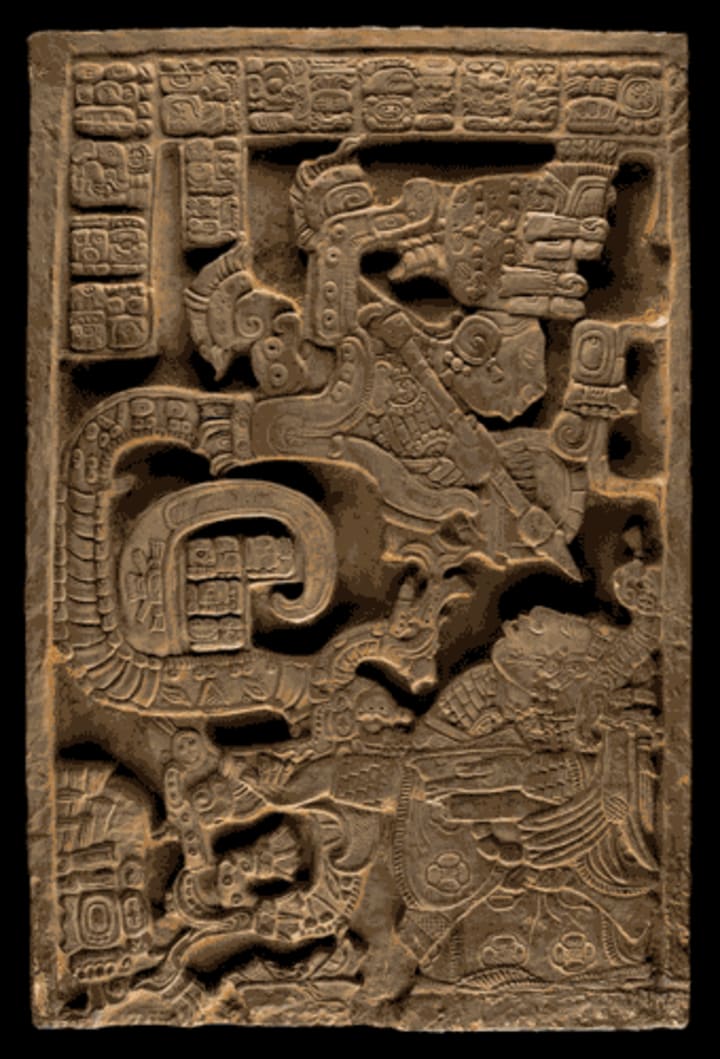
First was what Cameron described as the “Vision Serpent”. In the Mayan pantheon of spirits, the vision serpent is an ancestor in warrior attire emerging from the mouth of an underworld snake, twisting upward from burning blood-soaked paper strips of self-sacrifice. The image to the left is from the Yaxchilan Ruins in Chiapas, Mexico. If you study the image you can make out the warrior coming from the stylized mouth of the vision serpent. Pay special attention to the teeth. Also remember that Xibalbá art tends to be much more crude and distorted than this kind of surface art.
Below is the “vision serpent” Cameron pointed out under an overhang near the entrance to the cave. I have stylized the image into an animated GIF to try and make the art visible — I did not add ,subtract or modify any of the stone work.
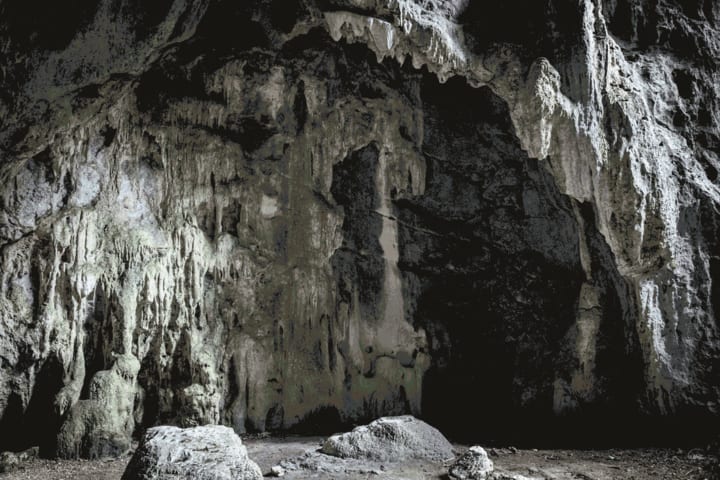
Of special note are both upper and lower teeth, they appear to be modified, the term is “clipped” in archaeological-speak, by something other than natural processes. It is interesting to note that Cameron, in association with the Belize Department of Archaeology, excavated ground immediately below this sculpture and found evidence of blood-letting, just as the lintel carving from Yaxchilan above suggests.
Further into the cave, an odorless, smokeless torch was lit to illuminate a massive head carved from a limestone column. We tried to simulate what the Mayas saw — they only had access to firelight this far into the cave. The shadow of the head danced on the wall behind and the flickering firelight created an illusion of movement in the sculptures eye.
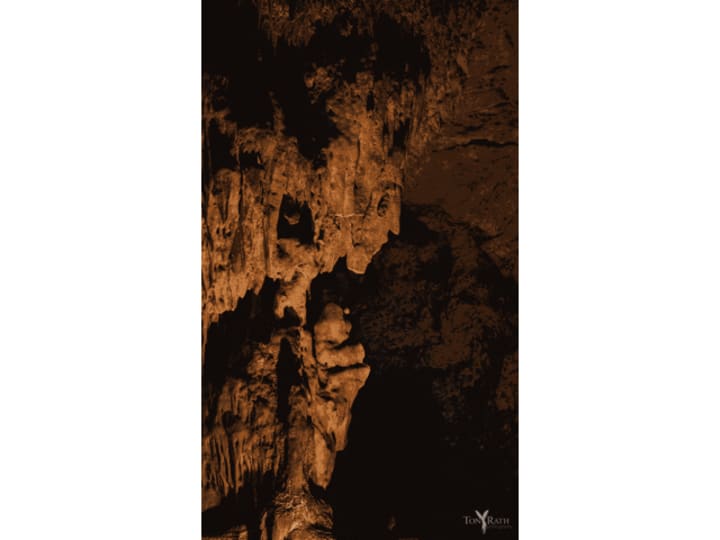
The carving was large, at least 12 feet from base to top of the headdress. The nose and the chin have been clipped, as well as the headdress along the side of the face and the forehead. The “staff” below the chin requires a bit more imagination to discern what it is.
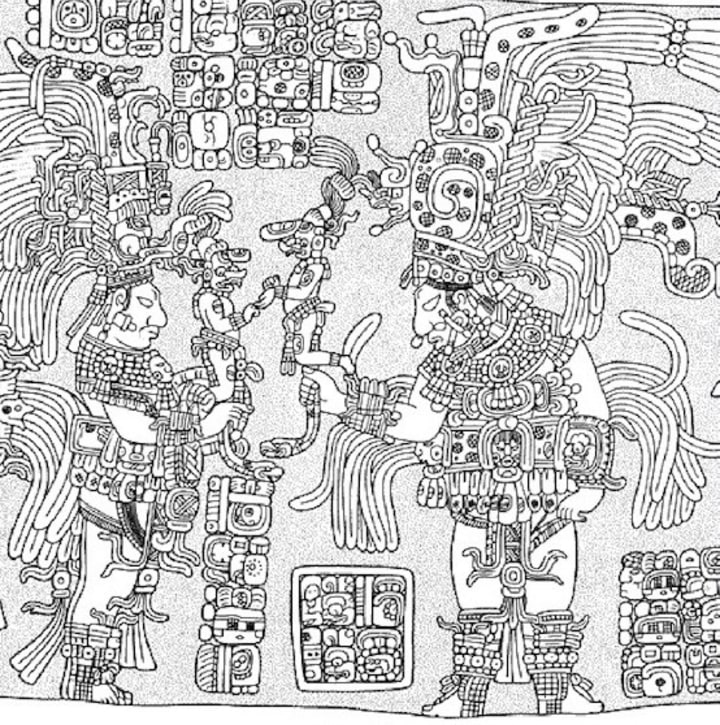
Another carving from Yaxchilan, Lintel 2, gives you an idea of what the artist might have attempted to depict. Here Bird Jaguar IV is standing with his young son, the future Shield Jaguar IV. The two are holding staffs. Note the sloping foreheads, the large noses, sharp chins and the clipped headdress.
By this time, Cameron had pointed out numerous other pieces of art. Guarding the entrance to a second opening in the cave was what looked to be a large bird head, or muan, carved 10 feet above the cave floor. A boulder the size of a stove with what appeared to be a long trunk protruding out one end, bore a likeness to a cross between an elephant and a tapir. In one corner was an old man’s face in profile complete with wrinkles. And overlooking the entire menagerie of carvings was a shed sized boulder that when viewed from one angle revealed a man’s profile, from another angle a man’s portrait, and a third angle a jaguar face complete with ears and fangs.

I began to see shapes and carvings everywhere, and had to catch myself and ask, are we imagining shapes out of the natural rock formations and the play of light? Or are we witnessing evidence of monumental modified speleothem sculptures on a scale not recorded before?


Cameron said we had one more room to visit, a place he named Mordor. In J. R. R. Tolkien’s fictional world of Middle-earth, Mordor was a dark and desolate region occupied by mythical Orcs and controlled by the evil wizard Sauron. There he said we would visit Gandalf, the great wizard and leader of the army of the West in Tolkien’s epic. I guess archaeologists, especially cave archaeologists, are fans of Middle Earth.

Sure enough, the rounded forehead, the bulging eyes, wide nose and the clipped mouth of Gandalf appeared in the light of our headlamps. Once again the light from our torch lent life to the “sculpture”. Much like the literary Mordor, the chamber we entered was barren, a wasteland carpeted with mud, silt, and bat guano. Bits of broken pottery lay sprinkled against the far wall.
As we hiked further into the cave, then climbed, then crawled on all fours up a slick, steep slope toward the second opening of the cave, we passed rock walls along the edges of the cave. The second entrance was an unreachable hole in the ceiling of the cave, with a beam of light illuminating an unrecognizable sculpture among a field of boulders. It was a few days after the summer solstice, yet we could not recognize any purposeful modification of the stone where the beam struck.

On the long hike out, Cameron asked what I thought.
“I know the Maya were skilled enough to build great cities,” I said. “So there is no reason not to believe they could also carve underground sculpture on monumental scale.”
Yet, time and the living limestone, as it does with all things, shrouds the past and forces us to question and investigate before declaring truth. I can imagine the monumental modified speleothem sculptures, but that does not make them so. Also, I am not a trained archaeologist, let alone a Mayan art historian. Only further study will say.

But I can also imagine this cave as a magical Mayan place of worship, whole chambers full of carved animals and spirits, a spiritual space of creatures and gods and men, made animate by shadows cast by firelight. For that is how the ancient Maya must have viewed these places, by fire. How alive their gods must have appeared, and how mystical and terrifying for the uninitiated. One thing for sure, I will never look at caves in the same way again.
A few days after our visit, Cameron sent me a short email with a photo attached and the subject line “I think we missed one…”:
Tony,
Zoom in to the upper left quadrant of this pic and tell me what you see on the ceiling….
Cameron

About the Creator
Tony Rath
Tony Rath is a writer photojournalist based along the shore of the Caribbean Sea in the picturesque town of Dangriga, Belize.
http://www.tonyrath.com
Facebook: BelizePhotography
Twitter: trphoto
Instagram: tonyrath

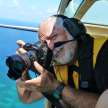




Comments
There are no comments for this story
Be the first to respond and start the conversation.